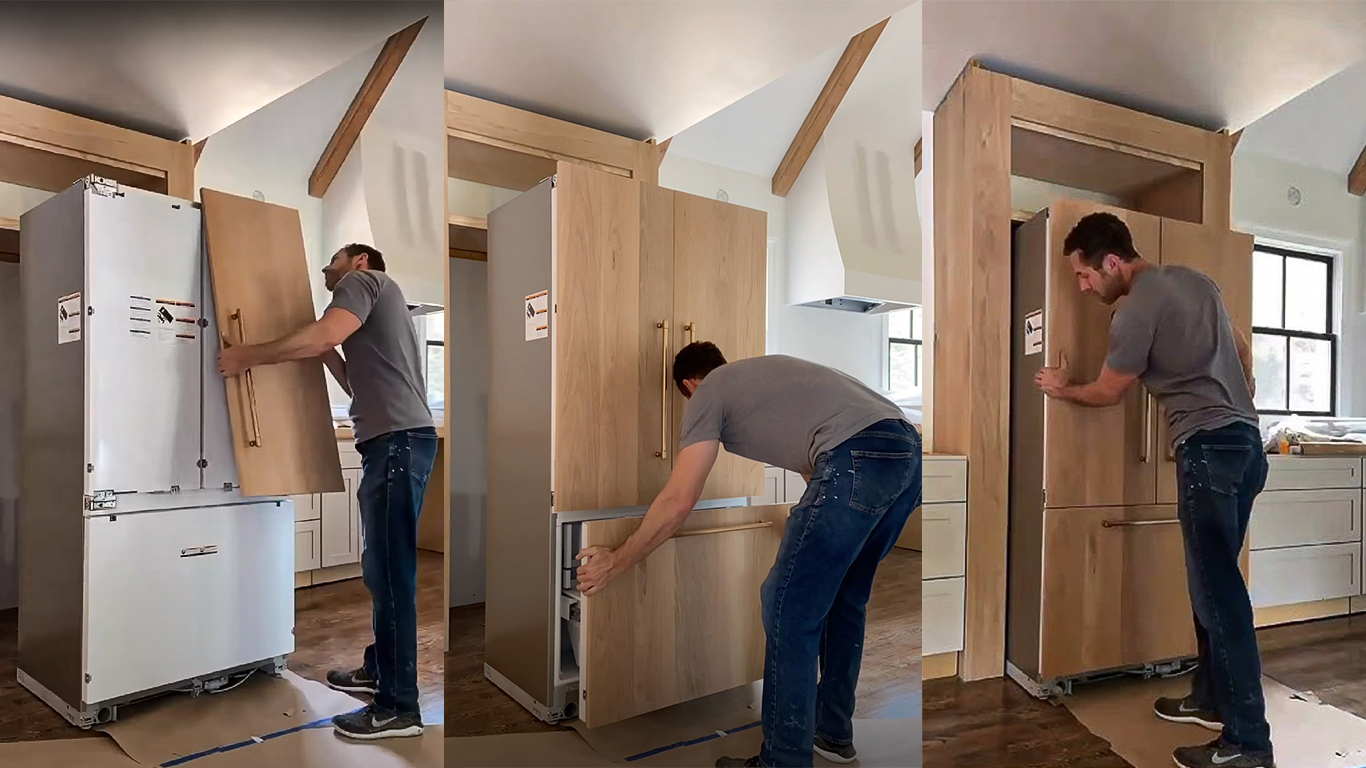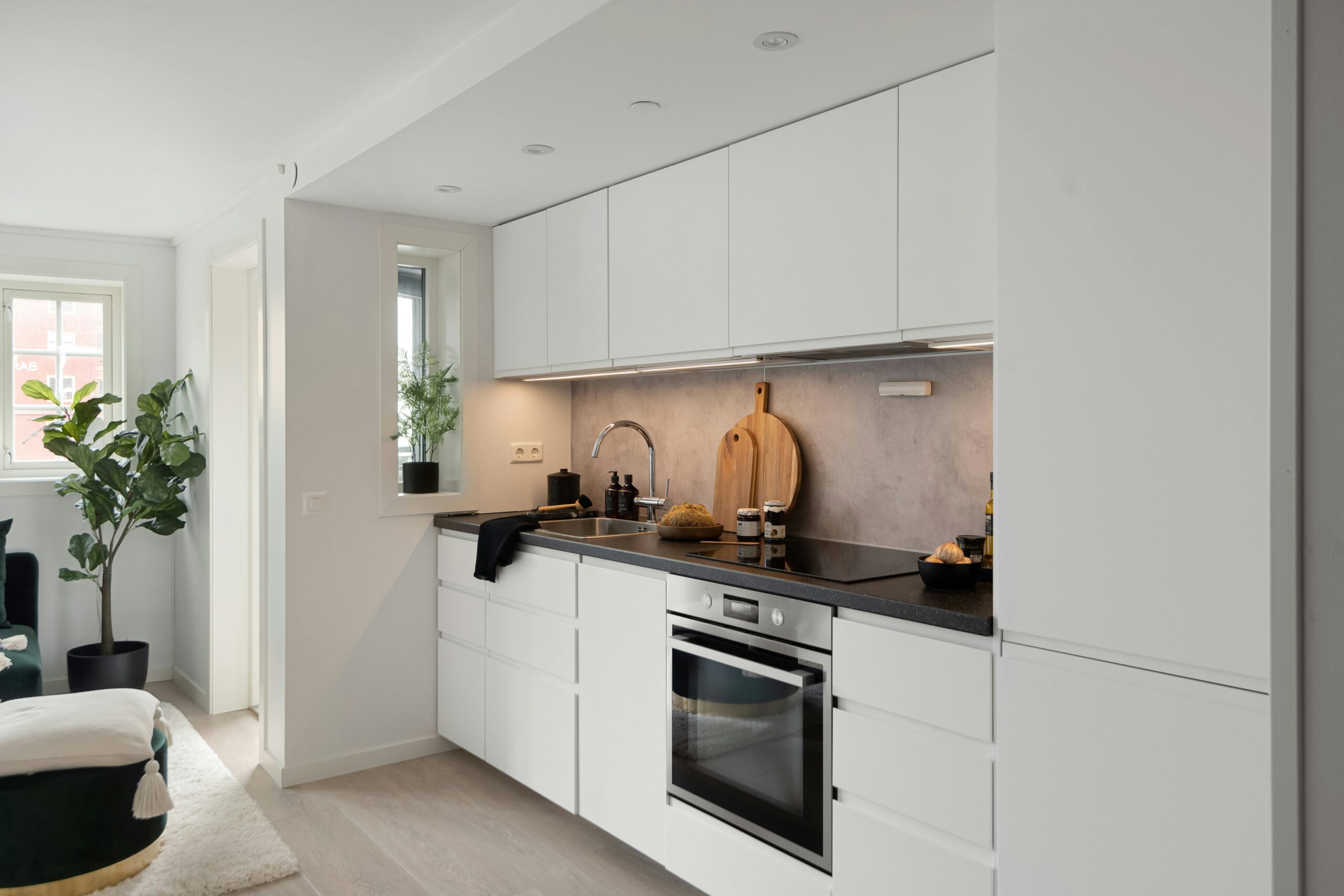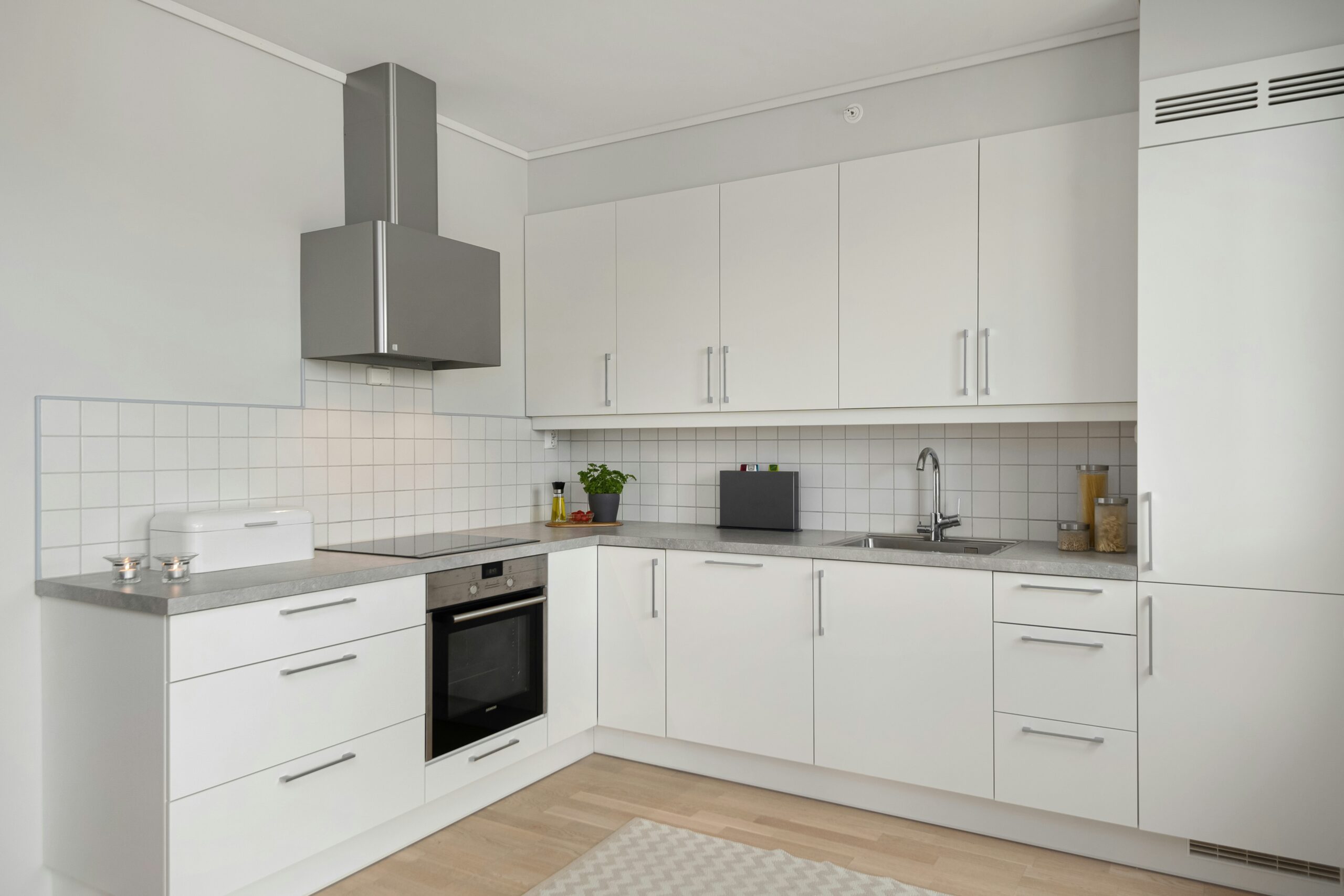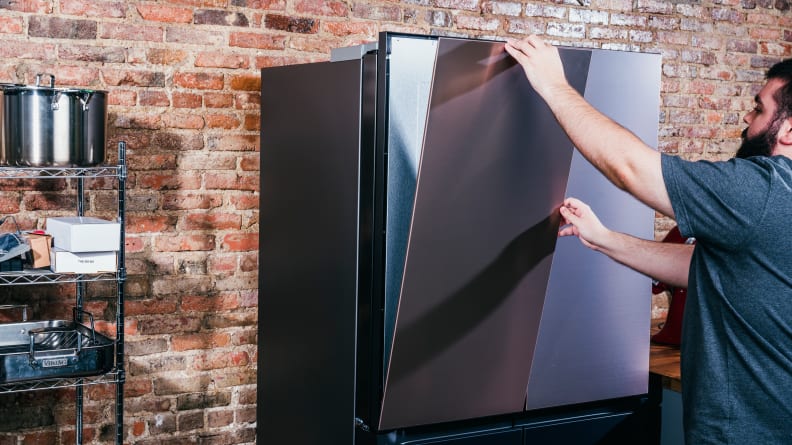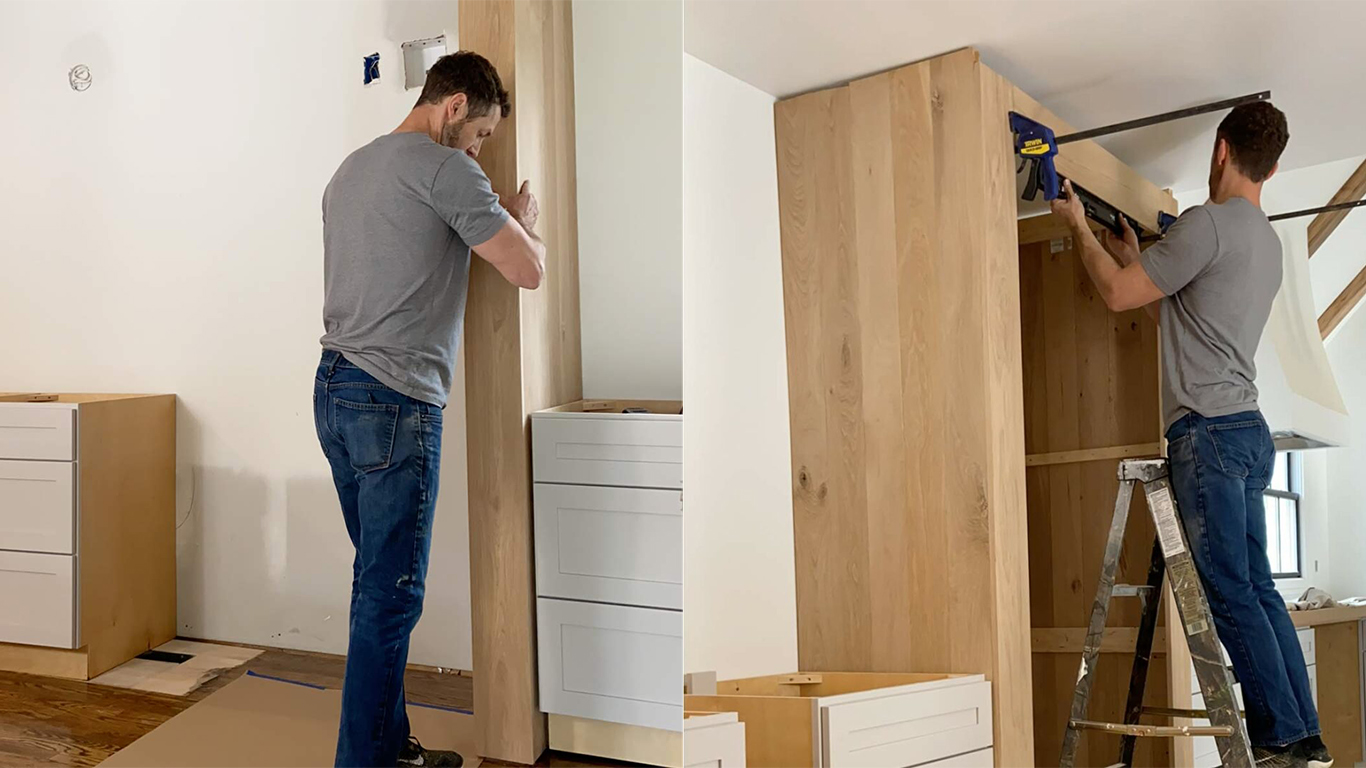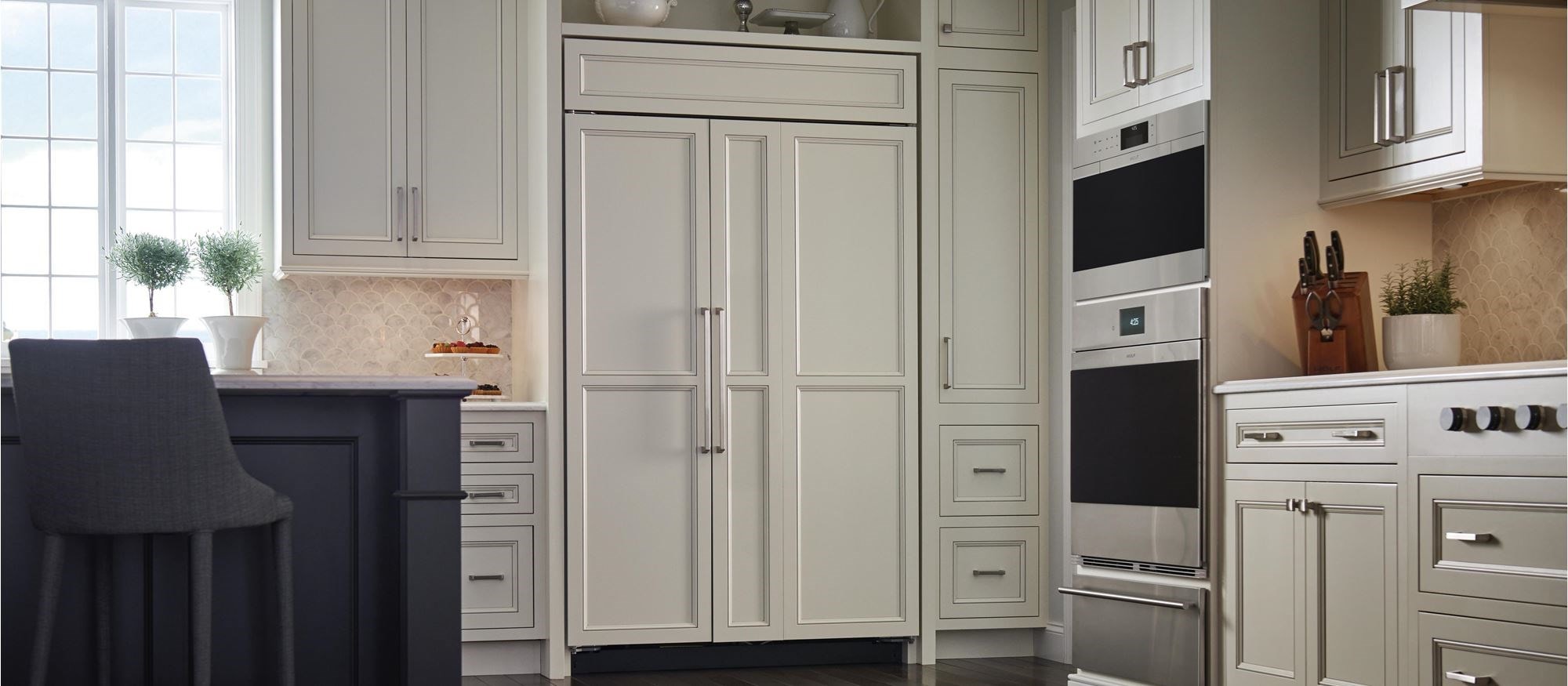Custom Panel-Ready Refrigerators: What to Know Before You Install | 8 Excellent Tips
- By May Khin

Elevating Function with Form in the Modern Kitchen
Panel-ready refrigerators offer more than concealed functionality — they reflect a commitment to visual harmony, spatial intention, and the art of refined living. These appliances seamlessly blend into cabinetry, transforming kitchens into architectural compositions where utility meets elegance.
But achieving this level of cohesion requires more than affixing a decorative front. From technical specifications to material selection and installation practices, custom paneling demands precision, collaboration, and a clear design vision.
In this guide, we focus exclusively on custom paneling for refrigerators — offering homeowners, designers, and cabinetmakers a comprehensive understanding of how to get it right from the start.
1. Know Your Refrigerator’s Requirements: Weight, Clearance, and Hinges
Before you choose finishes or textures, begin with your refrigerator’s specifications. Brands like Sub-Zero, Thermador, and Miele provide detailed paneling guidelines that include:
- Panel weight limits (typically 20–30 lbs for columns)
- Panel thickness (commonly ¾” or ⅝”)
- Hinge types (overlay vs. inset) and door swing clearance
Zero-clearance refrigerators require precise alignment to avoid damaging surrounding cabinetry. And don’t overlook ventilation requirements, which are often neglected in custom designs.
Pro tip: Always use the installation template provided by the manufacturer. Even a minor hinge misalignment can affect door sealing — compromising energy efficiency and performance.
2. Coordinate Early with Your Cabinetmaker
Custom paneling should never be an afterthought. It’s a collaborative process that involves appliance dealers, interior designers, and experienced cabinetmakers.
Ensure your cabinetry and appliance panels are designed in tandem, especially in frameless or modern kitchens where millimeter-accurate spacing matters.
Discuss details such as:
- Wood grain alignment and direction across adjoining panels
- Material resilience in high-humidity zones (e.g., near dishwashers or coffee stations)
- Handle design or integration with touch-to-open technology
For a refined, bespoke look, many designers choose bookmatched veneers, hand-lacquered panels, or even furniture-grade treatments that elevate the refrigerator into a design feature rather than a utilitarian object.
3. Design Harmony: Choosing Panel Materials and Finishes
Your panel should speak the language of your kitchen. Whether your aesthetic leans toward coastal minimalism or Parisian traditionalism, your refrigerator’s façade must balance beauty with durability.
Top material options include:
- Paint-grade MDF for smooth painted surfaces
- Plywood with hardwood veneers for natural grain expression
- Rift-cut oak, walnut, or matte lacquer for modern styling
Avoid solid hardwood unless stabilized — wood movement can cause cracking or warping, especially in homes with seasonal humidity fluctuations. And always ensure the finish is wipeable and durable for everyday use.
4. Visual Weight and Kitchen Balance
The refrigerator is often the largest appliance in the kitchen — which makes its visual “weight” critical to your overall design. Panels should contribute to flow, not distraction.
- Light panels with subtle grains enhance airy, Japandi or Scandinavian kitchens
- Dark woods or glossy finishes offer drama and grounding in Modern Classic or transitional interiors
- Choose panel materials that echo nearby cabinetry, islands, or built-ins to preserve continuity
It’s not just about hiding the appliance — it’s about anchoring the room in intentional elegance.
5. Panel Attachment Methods: Magnetism, Hinges, and Fit
Different refrigerators require different paneling methods — and understanding those distinctions is essential for flawless execution.
- Magnetic mounts allow easier removal and alignment
- Screw or slide-track systems offer greater permanence and structural integrity
- Overlay panels sit on top of cabinetry for a bold, seamless presence
- Inset panels recess into surrounding cabinetry for a quieter, more refined look
Each method influences the visual language and usability of the appliance, so align style preferences with technical feasibility from the outset.
6. Weight Distribution and Appliance Performance
Custom panels that are too heavy can strain your refrigerator’s hinges and compromise its function.
- Follow the manufacturer’s weight guidelines strictly (usually 20–30 lbs per door)
- Consider reinforcing panel frames if using heavier hardwoods or thick lacquered finishes
- An overloaded hinge can lead to air leakage, uneven door closing, and premature wear
Balanced weight ensures your appliance performs quietly and efficiently for years to come.
7. Pre-Installation Practices: Precision Matters
Installing refrigerator panels is as much about process as product. Prepare your space with care:
- Let panels acclimate to your kitchen’s humidity and temperature for at least 48 hours
- Ensure the refrigerator is perfectly level before installation
- Double-check panel dimensions — even small errors can create unsightly gaps or binding doors
Use a laser level or high-precision tools when aligning your panels. The cleaner the fit, the more integrated the result.
8. Maintenance and Long-Term Care
Panel-ready refrigerators offer timeless appeal — but they require routine care to maintain their beauty:
- Wood panels should be dusted regularly and occasionally oiled to prevent drying
- Glossy finishes benefit from microfiber cloths and non-abrasive cleaners
- Avoid moisture buildup near seams or hardware
- Be prepared to refinish or replace panels if your kitchen design evolves — one of the subtle benefits of custom fronting
Well-maintained panels can last as long as the cabinetry itself, aging gracefully with your kitchen over time.
Where Performance Meets Aesthetic Integrity
Panel-ready refrigerators don’t just hide appliances — they reframe them as integral elements of thoughtful, luxurious design. From the choice of wood grain to the precision of hinge placement, every detail contributes to a kitchen that feels unified, intentional, and elevated.
Incorporating custom panels is not just about visual quiet — it’s about creating a space where function serves form, and where design choices reflect who you are.
